
| PHOTO ARCHIVE | |
| Bike Photos | |
| Gas Tank Photos | |
| R75-KS750 Photos | |
| BMW LITERATURE | |
| Sales Brochures | |
| Parts Manuals | |
| Repair Manuals | |
| Service Bulletins | |
| Road Tests | |
| Other Literature | |
| PARTS & BIKES | |
| For Sale | |
| Wanted | |
| GENERAL | |
| Terms, etc. | |
| About Me | |
| EMAIL ME | |
| John Lacko | |
| HOME | |
| Go to Home Page | |





From the same collection, this BMW employee (security?) ID badge.

Also included with the other items were two of these numbered metal tags - perhaps used as part of some inspection process for parts moving from one finishing process to another? Anyway, if it says BMW then you-know-who has to have it!
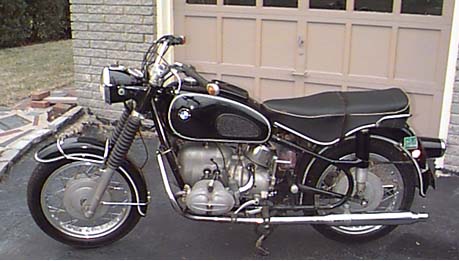
My 1969 R69US. Shunned by most (including myself) for decades, I believe that the US fork models will one day be a prized collector machine. These bikes were highly refined versions of a model that BMW had been making for nearly 15 years, and in studying them closely you can see many hints of the /5 models that were just around the corner.
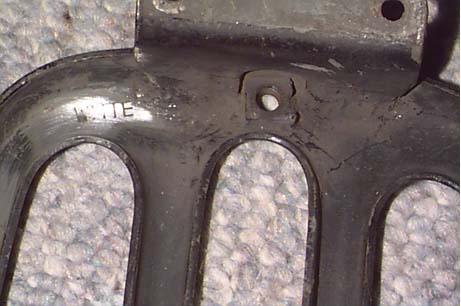
The pillion rack and its secret... How do you tell if your pillion rack is original? Well, here's one way: Check the underside of the rack, on the end with the single hole on top, and look for the "WITTE" mark stamped into the bottom. Witte was the manufacturer of the fender top pillion racks for BMW, and their mark can be found on the 1950-1969 racks.
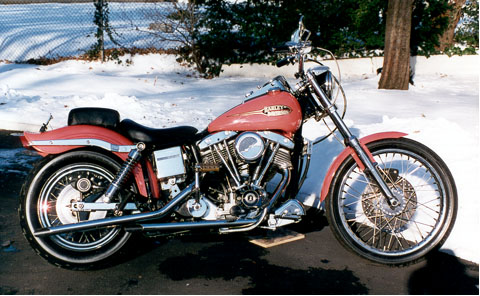
"No it's not pink, it's CORAL!" A bet I lost... attempting to repeat my 30 day restoration personal-best, I tried to do this 1971 Harley-Davidson in 30 days too. Well, one year later it was done. Actually I got stiffed by a parts vendor, which made me put the whole project aside for many months. In the end it didn't go back to stock, I just did it as a mild custom.

Photo of a nice military R12 w/sidecar that was owned by a friend in CA.

Very popular with vintage BMW collectors are these race souvenir badges and also dealer badges. Some people have gone as far as to buy a bike just to acquire the badge on the fender! Seen here is the badge from my 1952 ISDT R68.
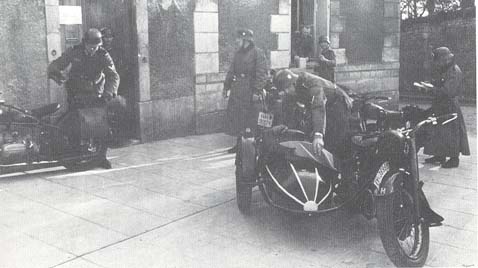
Many people believe that the
"Bell fender" was introduced on the 1950 R51/2, but it actually made its debut
on the late prewar twins. Here's a shot showing several impressed civilian machines in the
service of the Wehrmacht, with the sidecar machine featuring the early Bell fender.
Like the R51/2, the prewar Bell fender featured a rivited on flat steel front and center
brace. While almost identical, the prewar fender has a slightly different profile
(more of a "D" shape) then the post war item, allowing the trained eye to spot
it in a lineup.
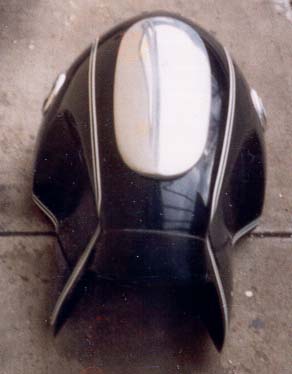
A riders level view of a Heinrich gas tank. The Heinrich is most commonly found in an 8.2, 9 (sidecar use) and 10 gallon size. Appearance wise the the 8.2 and 10 gallon sizes seem identical - the smaller one looking like 3/4 version of the larger. The 9 gallon size looked like the other two models, but was better suited for sidecar use. It was sold without the tool box on top and the beautiful aluminum cover - there was just a filler cap up front. Heinrich tanks were available in steel or aluminum. Late in the 1970's the flow of new tanks pretty much dried up.
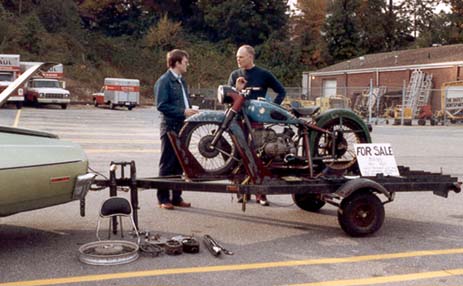
My 1951 R67 up for sale. As I started trying to raise money to get my first R75, several bikes had to go. To me the first year R67 is a sleeper with collectors, who spend all their time looking for R68s! With only 1,470 made, the 1951 R67 is still not overly difficult to find. That's me on the left, pointing out all the good features of the bike with the ugly paint, but missing little more than a pillion rack, front fender brace & exhaust system.



